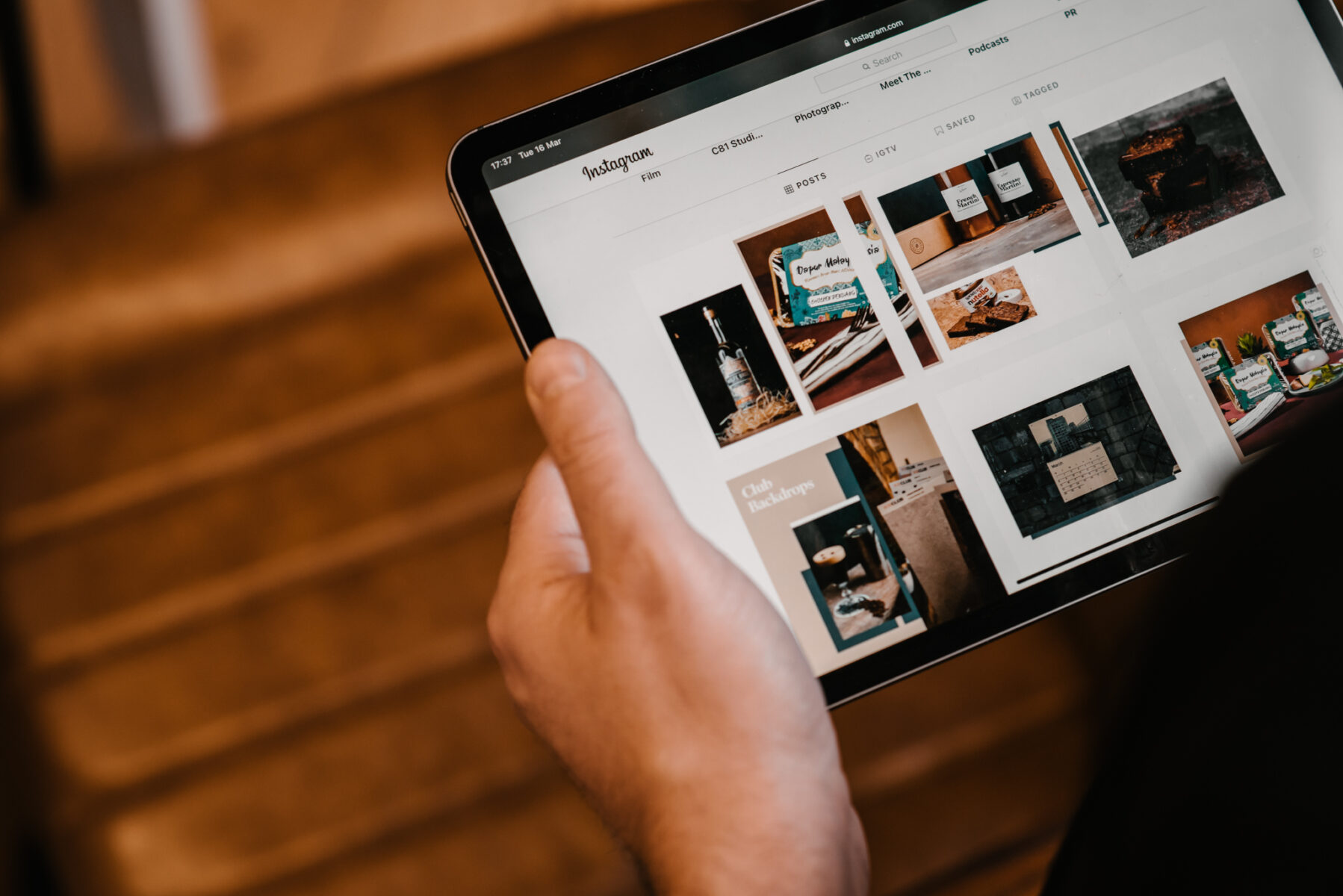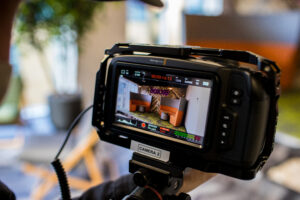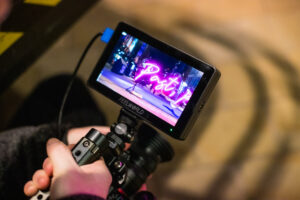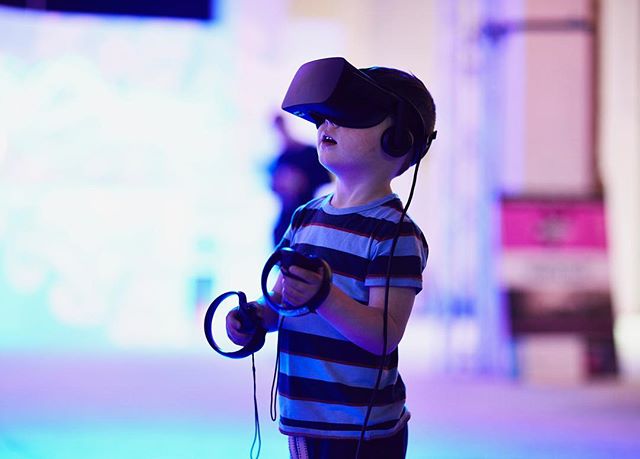April 1, 2021
Social trends for 2021


The digital landscape can change at the drop of a hat; this is something we’ve seen so much of over the past year. Whether it’s the sudden boom in video comms witnessed as we all moved to home working, or the mysterious overnight changes implemented by social platforms, one thing is for certain – social channels are changing more frequently than ever before.
This means, of course, constant re-education and the ability to create flexible strategies. A feature you’d banked on using with a client can sometimes disappear or completely change overnight, for example. We sometimes have to completely pivot a strategy one day to the next!
The way the scenery changes so frequently is positive though, too. Users and brands both get so much scope for creativity and improvement in this state of flux.
2021 is getting on apace, but I sat down with Beverley, our Social lead to gather up her four key social trends for 2021. These are the social trends for 2021 that we’re already seeing and some predictions of what we expect to see this year:
1. Live streaming

The impact of the pandemic gave a massive boost to the popularity of the live stream, but with Instagram Live and Facebook Live, it was already on an upwards tangent.
Defined as transmitting or receiving live video and audio coverage over the internet, live streaming represents reams of content opportunities, from live tutorials to product demos, TV-style streams, live music gigs and ‘behind the scenes’ content. Though the popularity of some of these elements may fall a little as we (hopefully) leave the pandemic behind us and can enjoy in-person events, the boost in popularity this medium has seen will sustain it into further evolutions and continued growth.
Chat to C81 if you’re interested in the potentiality of using live streaming for your brand. We can consult for your needs, either live streaming for you or hiring out our gear.
2. Shopping
 More and more often, retail brands are looking to make that sale in as few taps as physically possible. We predict that this is only going to grow. You can see something on your Insta feed and have purchased it in a matter of a couple of clicks, which is amazing for brands (not great for our wallets/willpower). Facebook shopping is a factor at play too here, as is TikTok.
More and more often, retail brands are looking to make that sale in as few taps as physically possible. We predict that this is only going to grow. You can see something on your Insta feed and have purchased it in a matter of a couple of clicks, which is amazing for brands (not great for our wallets/willpower). Facebook shopping is a factor at play too here, as is TikTok.
Initially a platform for capturing quick dance routines, TikTok has exploded in popularity, and has caused increased sales in a variety of products featured in viral videos. Remember the feta tomato pasta everyone was talking about last month? That came from TikTok (and went viral on Instagram too, proliferating across platforms). Influence and viewership via viral video spread can really impact shopping habits, and I think this is a strength brands may try to harness.
Instagram has even moved their shopping tab. Instead of prioritising notifications, they have put the shopping tab where notifications once was, so channels are having to adapt to this trend too – it’s clear social sway over our shopping habits has only just begun.
3. Video

Video has always been huge across social, and its power continues to grow as different media forms are better catered to across social channels. Where youtube was once the hub for video content, short-form video has been hijacked – by Insta Reels and TikTok – whilst longer form videos have thrived on IGTV.
The way that social videos are consumed has changed. Instead of ‘click here to watch the video on YouTube’, increasingly the channel you’re on can host the video. Marketers thus have to make sure that the videos being produced hit the requirements for the channel they’re being posted on. Short videos tend to work best, and most people now caption, for inclusivity.
The job of social video creation has thus gotten much harder, as both channel requirements and different audience types on each platform sway the style and spec of the video that is made. Stories, Reels and TikTok can be a little ‘rough and ready’, for speed and authenticity, whilst Facebook and twitter ought to be more polished.
Finally – our attention spans on social media is at its lowest ebb right now. Content, including video, needs to capture people within the first few seconds, otherwise you’ve lost them. Every platform supports scrolling, and unless you are immediately watchable, your audience has moved on.
4. Humanity
This is a movement in part prompted by the pandemic. Since all of our relationships have moved online, with regulations stopping us mixing in-person for almost a year now, on and off, we’ve come to expect humanity from brands, too. People buy from people! So this year, we predict success for brands who show their staff, show their vulnerabilities, and ultimately show their humanity. Being a faceless brand just won’t cut it anymore. Talk about issues that matter to your brand – but, also, on a wider social level.
Communicating your values is key. There is an expectation now, more than ever, for brands to “take a stand”. Customers increasingly align themselves with a brand because they share common values. Many brands know this, and have cynically gone about ‘greenwashing’, with spurious claims on their sustainability record etc, or posted a black square for BLM whilst following through materially on nothing. But increasingly, your customer base will know if you’re not following through. Posted a black square? That sort of virtue signalling means nothing if you have poor workplace diversity and no systems in place to check white privilege and allow equal opportunity access to jobs, for example. Customers are getting more and more savvy about brands who are trying to pull these stunts, and using social to check them and even cancel them.
This absolutely doesn’t mean shoe-horning social issues into every campaign, or newsjacking terrible situations globally on your social; that is neither advisable or appropriate. All it means is being aware of conversations, and joining in when it feels right to do so. Ultimately, it’s a demand for authenticity, and being better – for the world, and for the world’s diverse populations.
5. Stories
 Okay, this is part of the ‘video’ subheader – but it is destined to be so big we need more space for it. People are demanding access to short form video content across multiple platforms, and many channels are delivering right now. The plus for the platform? Content is even more temporal before, making its usership want to check in at least daily to be sure not to miss out.
Okay, this is part of the ‘video’ subheader – but it is destined to be so big we need more space for it. People are demanding access to short form video content across multiple platforms, and many channels are delivering right now. The plus for the platform? Content is even more temporal before, making its usership want to check in at least daily to be sure not to miss out.
Even LinkedIn, long considered a platform for older users and more professional utilisation, has enabled story uploads. Your video (up to 20 seconds of footage) can be recorded directly through the app, adorned as usual with stickers, mentions and text, and be available on your feed for 24 hours. Twitter launched ‘moments’ back in 2016. These curated stories enable users to stitch together multiple tweets, creating a storyline or slideshow feel. However, ‘fleets’ are their true ‘Stories’ alternative. They are similarly ephemeral, but fleets (or ‘fleeting moments’) cannot receive likes, replies or retweets, can be seen by anyone (you can see them even if you don’t follow the person who posted them) and will disappear after 24 hours.
AR and VR
It was fascinating to see the launch of PokemonGO back in 2016, its AR-insertion of Pokemon into real life leaving the older generation confounded as teenagers bumped into them whilst glaring and mumbling at their phones, trying to ‘catch ‘em all’. The leap of faith paid off, as PokemonGO was the first proper mainstream AR success. AR is now (virtually) everywhere (sorry). From ASOS to IKEA, you can now check out a brand’s products in personal settings (trying clothes on virtually, or placing furniture in your own space) to help visualise their product in your environment. These ‘try-as-you-buy’ experiences can really leverage sales, helping customers to overcome any objections caused by uncertainty – and of course, support online purchasing, which has been crucial to brands through the pandemic.
AR and VR are trending high through stories, too. Plenty of brands are wheeling out fun AR filters, to help them spread a message – look at McDonald’s recent one. [PHOTO] It’s a fun way to engage the audience, and is a more subtle way to get consumers involved with brands in general – whether you use an AR filter to add googly eyes to your cat, to check out which Disney princess you’re most like or to find out which Bundobust dish you want to be!


